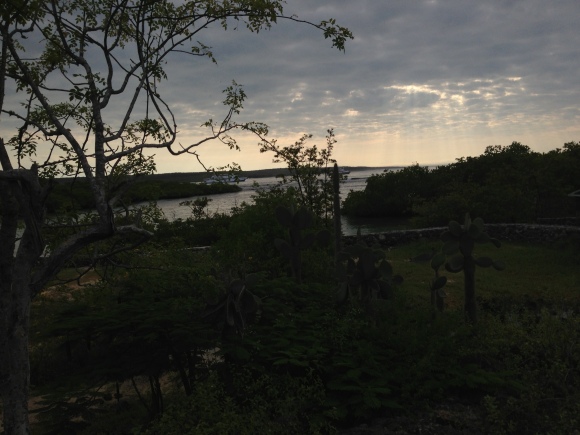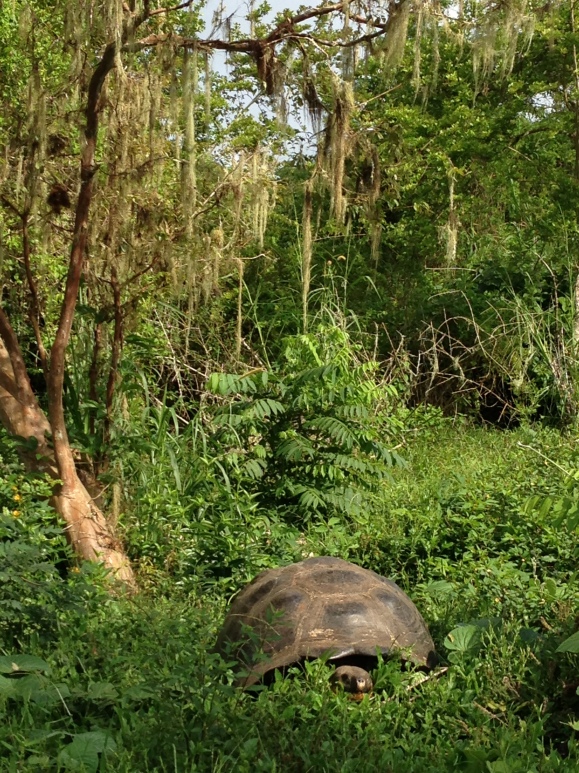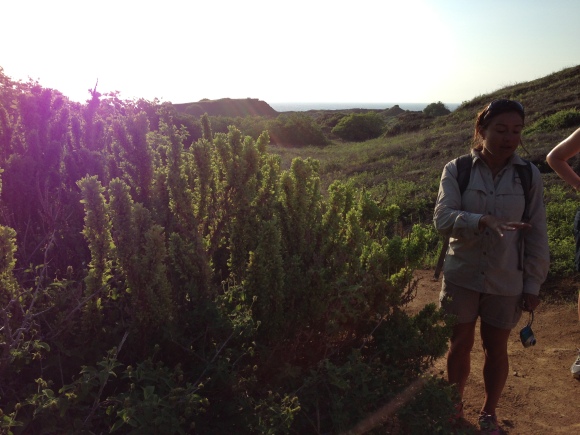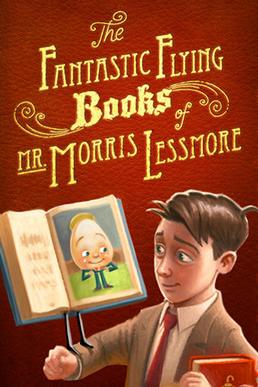Fiesta Time!
Fiesta is here! Never mind that downtown is about to become an absurd gridlock of bleachers, confetti, and carnival food. I love this time of year!
I love color. I love revelry. I love living downtown.
Viva Fiesta!

![IMG_2380[1]](http://freebekah.files.wordpress.com/2013/04/img_23801.jpg?w=580)
![IMG_2382[1]](http://freebekah.files.wordpress.com/2013/04/img_23821.jpg?w=580)
![IMG_2387[1]](http://freebekah.files.wordpress.com/2013/04/img_23871.jpg?w=580)
![IMG_2393[1]](http://freebekah.files.wordpress.com/2013/04/img_23931.jpg?w=580)

Fiesta is here! Never mind that downtown is about to become an absurd gridlock of bleachers, confetti, and carnival food. I love this time of year!
I love color. I love revelry. I love living downtown.
Viva Fiesta!

![IMG_2380[1]](http://freebekah.files.wordpress.com/2013/04/img_23801.jpg?w=580)
![IMG_2382[1]](http://freebekah.files.wordpress.com/2013/04/img_23821.jpg?w=580)
![IMG_2387[1]](http://freebekah.files.wordpress.com/2013/04/img_23871.jpg?w=580)
![IMG_2393[1]](http://freebekah.files.wordpress.com/2013/04/img_23931.jpg?w=580)

My sister and her husband were living in my grandparents’ old house. The alarm, which had not been turned on for literally over a decade suddenly went off for no apparent reason. It was loud (which upsets my sister), and it was relentless. My brother in law tried turning it off, dismantling it, and disconnecting it, and still it screamed.
Suddenly he turned, and there was my sister, who had been outside calling relatives to try to figure out the alarm code. She was holding heavy duty scissors and wearing her game-over face. With no pause for discussion, she took a handful of the freshly exposed wires and cut straight through them. The alarm stopped. She handed the severed hardware to her husband and walked away. The alarm is turned off in a permanent way.
That’s what happened to me and God-talk.
Once upon a time, my faith was easy for me to talk about. I loved going to conferences on topics like “the church” or “the Church” or “this thing called church.” I could worship pretty freely in most settings (I say most because of my weird squeamishness in charismatic services). Nothing got me jazzed like a good theological debate or the inside jokes that only Bible students can access. I wanted to live my life in the semantic fray of those who would decide what is most important to Jesus, and what’s really wrong with the world.
And then came a concentrated series of misunderstandings, hurt feelings, and disappointments that made corporate worship and spiritual intimacy almost unbearable. The language of these misunderstandings was the language of my faith. The words that hurt my feelings cut straight to my identity, because they were words of my faith. The disappointments knocked the wind out of me all the more because they were delivered in the same language I had used to pin my hopes to the church.
The words that had been my life now sound like death to me.
The music, the memes, the tropes, and the catchphrases of Christianity feel like itchy wool on the blistering summer of my heart. So it has been with a fair amount of desperation that I’ve been hunting for sounds that don’t make me cringe or want to hide. Right now, that means going to the symphony.
Last weekend the San Antonio Symphony, San Antonio Mastersingers, Trinity University choir, and UTSA choir performed Verdi’s Requiem, and they did so with a grandeur I had never seen from this group of hard-working and humble musicians. Trumpets in the mezzanine. Bass drums. Super-titles. My lungs were vibrating behind my ribs from the sound waves, and my soul shook somewhere deep my guts.
In the wake of the explosions at the Boston Marathon, the shootings at Sandy Hook, and Kermit Gosnell’s house of horrors, and the millions of lesser injustices we witness every day, we should all appreciate the need for songs of grief and cries for mercy. The concert was universal and personal in a way we often forget that we need. Not to compare my grief with the victims of tragedy, but simply to point out that death has many faces, and no paltry words or chords can match it.
Verdi was not a man of public faith, but he used the requiem format – a sung funerary mass from the Catholic church – to honor deceased friends and a common political ambition of a unified Italy. He was skeptical of the church, and yet the power of a private devotion wasn’t lost on him. His distrust did not run so deep that he would abandon the vocabulary of faith. Instead he made it beautiful by composing one of the finest pieces of music to carry it past the ears and into the soul, past the cynical guards who kept the words themselves at bay.
I can relate.
As I listened, four soloists and three choirs delivered the haunting words of the Kyrie, Agnus Dei, Sanctus, Lacrimosa, Lux Aeterna, and the rest until finally the Libera Me, which literally means Deliver Me. The words were displayed on supertitles, but I didn’t need them to know that this terrifying and haunting beauty was at once the death mass for who I thought I would be, and a reminder of why I’m still tangled up in this tattered and sweat soaked faith of mine.
I’m not who I was. Not headed in the same direction, not in the company I used to keep. And the gulf grows greater every day.
It’s difficult to worship. It’s difficult to talk about my faith, or to hear others talk about the faith we share. But it is not difficult to hear beautiful music. Music that makes me want to join when it sings, “May eternal light shine upon them, O Lord, with Thy saints forever, for Thou art good.”
I pride myself on being a good packer. Or at least in having chosen an excellent convertible carry-on/backpack suitcase once upon a time. Two weeks in Africa, no sweat. Forty days in Europe, easy. This summer it was my moble mueble carrying not only clothing but plastic plates, utensils, and basic groceries as I lived three days per week at a hotel in Katy.
This last trip, however, may have stretched my trusty sidekick to its limit. He’s still going strong, zipper works, wheels roll, handle retracts. But my creative packing and his elasticity we going full throttle as I packed for my trip through Peru and Ecuador. First off, it was a business trip, so I needed to have the ability to look nice, should the situation present itself. I would also be hiking, snorkeling, city-touring, and boating. But the most complicated element: I would be traveling through six climate zones, which I will here below grossly oversimplify.
#1 Coastal Desert
“It never rains in Lima,” said the man driving us from the airport to our hotel in Miraflores. We would hear this exact sentence 3 more times before we left Peru.
Nonetheless, there were puddles on our terrace in the morning.
Lima’s coastal desert climate is a product of the Humboldt Current, which keeps it temperate (60s in their winter, 70s in their summer) and foggy. In my opinion, humidity makes all weather feel more extreme, so add 10 degrees to the heat index for summer and add “cold sweat” to the winter forecast. It’s a humid place, even if it rarely comes to fruition. Most of their <2 inches of “rain” every year, like our puddles, are actually condensation from the dense fog called the garúa.
The closest thing Lima has to crazy weather are El Niño events, when the Humboldt Current warms up and they have a heat wave. But that wasnt’ happening when we were there, so I have to say, Lima was easy to outfit.
#2 Sierra- Andean Valley
The Sacred Valley and Machu Picchu are often lumped together in terms of climate. In fact good luck finding an online resource to say otherwise. However, thanks to the windows of the Vistadome, we watched as bromelia replaces agave, opportunistically sprouting on trees and rocks, while the agave ran out of personal space. The polite and orderly mountain flora is overtaken by aggressive and lusty Amazonia.
The true Andean Valley is ideal for agriculture. Temperate, predictably dry, then torrentially wet November-February.
Aguas Calientes and Machu Picchu are exploding with life. It’s everywhere, and while rain and dryness are equally predictable, there’s an added something in the air that covers the Citadel with clouds and the rooftops with jungles of lichens.
#3 Sierra – Andean Highlands
Again, the highlands are often lumped in with the Sacred Valley and Machu Picchu, but anyone who has had to budget their long-sleeves and short sleeves know that this is simply not true.
Cusco is cold. Technically we were there in the summer time and I’m wearing a jacket in most of the pictures. Also, this has nothing to do with the climate, but the air is also terribly thin, so everything is out of whack when it comes to dealing with the climate. You’re cold, you’re panting, you’re dizzy, you’re thirsty.
I have no idea what grows and lives naturally in Cusco, because we never left the heart of the city, or strayed from it’s concrete arteries.
#3 Selva – Amazon
This might have been our most dramatic transition. From chilly Cusco to Puerto Maldonado where the highs and humidity were in the 90s. We never stopped sweating. Fortunately, our mood was somehow improved by this, and Lewis concluded, “We’re just happier when we’re sweating.”
Never thought I’d hear that said about me.
The Amazon is fascinating. The soil is nutrient poor, and so things grow quickly with shallow roots dog piling on top of one another. In some cases, like the banana tree, they are productive for about three years, and then they are gone. So few develop into hardwoods that our naturalist guide made a point to call attention to almost every single one we passed.
In the explosion of life, competition is fierce, and so everything is brighter and bolder than it would be in a world where there were enough of things to go around. Flowers need to attract pollinators, and you don’t waste your energy getting all magnificent if there’s no need to impress anyone. It also means that bacteria, mold, infestation and decay happen more rapidly. Everywhere you look, there is life…and it’s all fighting for the same small space.
Four (some say five) layers, each it’s own system of relationships and bioeconomics, make up the rainforest. The herbacious floor, with life piled upon life and the detritovores coat the ground and speed decay. Next layer up are the shrubs and short trees of the shady understory, which provide shelter to much of the forest fauna. Next up is the canopy, which can only be explored by binocular or ingenuity, as it is both dense and impossibly high. The emergent layer are those survivors who hover even above the canopy, like the Jetsons.
Those last two layers, the canopy and the emergent layer are made of primary forest. Old growth. These are the treasures of the forest that have survived mold, parasite, and competition for light and nutrients. These are the mighty men of the rainforest. And they can’t be quickly replaced.
#4 Galapagos
I had soaked through most of our warm weather clothes by the time we got to the Galapagos. Fortunately March, while it is the hottest month, is the best time for snorkeling, so I could wear my bathing suit most of the day.
But there were the morning hikes, during which I would wear slightly smelling post-Amazon explorer attire and give it 20 minutes until they were drenched anew under the unforgiving sun of 10am on Española Island.
The Galapagos, like the coast, is dependent on the currents for it’s seasons. Humbolt, June through November, brings dry air and wetsuit weather to the waters, particularly on the western islands. Panama Current brings wet summer, peaking in March, when hiking is best reserved for the hours of 5am-9am. Which is what we did.
Every few years El Niño comes and starves the islands, which are devoid of fresh water resources. Without rain, the volcanic rocks just bake, along with everything on them.
Being volcanic, the rocks hold almost no nutrients, and host desert plants like sesuvium and prickly pear (which impressed even this Texas girl by growing into trees…). Their iconic tree, the ever-adaptable endemic scalesia grows across the climate zones, including the highlands of Santa Cruz where it shares space with a wider variety of short but dense vegetation.
Odd as it may seem, this remote and exotic world felt the most familiar, as far as my skin was concerned. August in San Antonio has a tropical desert element to it.
#5 Páramo
My favorite climate region was the one we visited last. Nestled between the continuous treeline and the snowline along the equatorial Andes lies the páramo. Cold and humid, pretty much year round and simultaneously home to delicate flowers, hummingbirds, and evergreens.
The mid 60’s temperatures were welcome, as we were all out of warm weather clothes that didn’t smell like a gym floor.
We hiked all day, visited the Andean condor rehab center, and sat down to dinner fresh faced and still smelling nicely. The crops were not particularly diverse in the páramo, but the dairy production was devine, and the cows looked happy with their lot in life. They should be, at least, as the scenery in the Zuleta region is nothing short of breathtaking.
If I had it to do over again, I’d spend two weeks in each location. No question. But as a survey, I left me utterly convinced that South America holds more natural wonders than anywhere else I’ve seen, and I hope that they know it, protect it, and stand by it.
As our panga neared a formation called “The Cathedral” at Cerro Brujo on San Cristobal island, I had mixed emotions. I was in awe, watching Kicker Rock appear and disappear as the waves batted us to and fro. I was also perplexed. How could anyone have ever sailed these waters and failed to realize the beauty of places like Cerro Brujo?


During the heady moment of imperial expansion, European powers planted their flags in just about every type of soil in the world. They mined, they conquered, they spread their germs and culture with liberality across most terrains. But upon reaching the Galápagos, yet unnamed, they found nothing to mine. No one to conquer. Nothing to take home. And so they called the islands cursed.

The “Islas Encantadas” of the South American pacific would suffer through the middle ages under the worldview that nature’s singular purpose was to illustrate Biblical principals to mankind. Bacon and his lot didn’t help either, because usefulness as the measure of value did not change the status of the volcanic islands, void of fresh water and edible vegetation.


\
Like most places deemed uninhabitable or useless by decent society, the Enchanted Islands began to collect indecent society. Pirates, felons, and women on the run found ways to inhabit the rocks, only to be murdered, run off, or defeated by the odds against survival in one place that would not yield to man’s narrow view of dominion. No one felt their efforts more strongly than the tortoises, who were the only edible game, and were thus hunted to within millimeters of extinction.

It was not until Charles Darwin stepped onto their shores in 1835 that anyone found something worth taking home: a bag of dead finches.
Darwin’s gaze dignified the islands, and anyone who now gazes at Kicker Rock glowing in the sunset owes to him one of the awesome experiences of her lifetime. And the islands that were of no value to those seeking gold, God, or glory, have become a goldmine to those witnessing the glory of God. Forget the culture wars for one moment and give thanks that we have been freed to love nature for what it is.


The Galápagos, in our time, are still not a quiescent subject to the whims and wishes of man. The National Park takes precedence over tourism, agriculture, and commerce. Guides are unapologetic in dishing out the answer we think we can buy our way out of, “No.”


Visions of Caribbean luxury are dashed on the tuff cones and chased far away by biting horse flies. Predictability is low where animals are not bated and tamed to earn big tips from schedule-bound tours. The heat is unforgiving in its season, and shade is found in as many places as is fresh water…none.

Yet, Darwin’s children flock like sea lions to those shores, seeking to understand the processes of nature, and its continual course of becoming. The islands attract those who are intrigued by an isolated ecosystem where predators are scarce and resources scarcer. Those who see a pond covered in sesuvium or a collapse crater and gasp in wonder. Those who marvel at the beaks of finches. There are some hallelujah’s only uttered in the language of science.


And so as much as indignance swells inside me to the rhythm of the waves beneath me, I am also glad. I am relieved that in a moment when we ruined so much, we did not ruin everything. I am relieved that those things which we did not deem worthy of our exploitation have survived to become our treasures. I rejoice for those who did not impose a tax upon every inch of Creation. Those who bound their fortunes to the flourishing of nature.


The conquistador spirit is alive and well, I know. Standing on the dock while Lonesome George’s remains were escorted by documentary crew off to the Smithsonian, I saw the sad face of the local girl who had grown up in the glow of his renown. She will never be able to buy the plane ticket to go to the Smithsonian to pay homage. She has lost him. Naturalist eyes are not immune to the allure of the spoils.

We cannot simply rest in our rapture over the rarity of this place. We must keep advocating, must keep reforming, must keep making those anti-Babel decisions that keep us off of the throne of Heaven. The Galápagos are a place where we can go to remind ourselves that we are not the measure of all things.

NOTE: for more light hearted detail of our trip, see the Alamo Area Master Naturalist Newsletter article.
There’s a new pro-choice movement in town. Instead of clinics and doctors, this time it’s about schools and teachers. Particularly in areas with above average high school drop our rates, like inner-city San Antonio. The curious urbanite will be curious about what this means for any children she needs to be educating in the future…
School choice is the term used to refer to a movement that includes everything from vouchers to homeschooling, as well as public charter schools. It is based on the assertion that parents who find themselves in failing schools should be given options to look elsewhere for their children’s education.
On March 26, Texas Senate Bill 2 is scheduled for public hearing. This bill will, among other things increases support for charter schools, including those not incorporated by the school districts in which they reside, like IDEA and KIPP. It will also establish a Charter Schools Authorizing Authority.
In advance of that hearing, Texans Deserve Great Schools held a press conference on March 22 at IDEA Carver, formerly The Carver Academy, on Hackberry Street.
Speaking at the press conference was Sen. Dan Patrick, the chair of the Senate Education Committee, author of the TX SB 2, and advocate of school choice.
Perhaps the strongest argument for school choice, one made by Patrick, is that it has always existed for those wealthy enough for private school and mobile enough to shift school districts. However, for those bound by income and geography to struggling school districts, there is little that they can do, however much they might want more opportunity for their child.
“Just because you are poor, in the valley, or in the inner city doesn’t mean you don’t care about your child…” Patrick said. He also pointed out that it was misguided to think that one educational approach would work for 5 million students saying, “Anyone who has more than one child knows that in the same family with the same upbringing, children learn differently.”
A key element of school choice, the one addressed by TX SB 2 is the availablility of charter schools.
“There are some that resist innovation, transparency, and rigor,” he said. Which is what Texans Deserves Great Schools proposes to bring to table.
He argued that with 5 million students in public schools, the idea that charter schools represent a serious threat to public school enrollment (and funding) is simply unrealistic. Right now, with approximately 150,000 students enrolled, charter schools account for the smallest portion of the pupil share in the state. With and 80,000/year growth rate, it is likely that 95% of all Texas students will continue to be enrolled in public schools.
Patrick, along with Victoria Branton Rico, Chairwoman of the George W. Brackenridge Foundation, made the case that adding options for families and students would not hurt existing public schools. On the contrary, they cited research showing how competition strengthens public school performance, which only bodes well for public school funding.
“Being pro-charter is not being anti-public schools,” Patrick said.
Branton Rico reiterated some of the challenges facing public schools, and celebrated advances in research that have allowed policy to move forward addressing the issues.
“A few years ago this was a policy dead end,” she said, going on to reference studies by MIT, Harvard, and others about the effectiveness of the high performing charter schools. The most compelling statistic being that students in charter schools receive an average of four more years of education than students in traditional public schools – which basically means that their drop-out rate is drastically lower. Dropping out of high school has a high statistical correlation to going to prison, Branton Rico pointed out.
Branton Rico highlighted Texans Deserve Great School’s four core principles to transform Texas schools (more in-depth explanations of the policies can be found here):
1) Implement proven education technologies and teaching innovation – these include blended learning, online classes, vocational training classes, allowing students to test for credit in classes without “seat time,” and innovation waivers for schools looking to pilot new program.
2) Make high-performing school options available to every Texas family – most notably by removing the cap on charter schools, allowing families to choose any public school they wish (while giving priority to the school’s local residents when a school reaches capacity), equitable funding and facility access for charter and traditional public schools, and increasing principals’ control over vital areas that affect campus effectiveness and efficiency.
3) Invest in the best teachers and teaching policies to improve student learning – which would increase rigor and flexibility on everything from teacher training, to pay-scales, to giving teachers full use of the grading scale (even zero) to evaluate student work.
4) Integrate an emergency, expedited fix for any failing Texas public school – the main point of which is to allow for more accessible ratings (such as an A-F scale) and swifter intervention for failing schools.
The final speaker at the press conference was Rolando Posada, executive director of San Antonio IDEA public schools.
He heralded a 100% increase in IDEA schools in Texas over the next five years, from 28 to 56, which proposes to increase college graduates in Central Texas and the Rio Grande Valley by 50%.
“Solving the education problem means that we are creating people who can solve the other problems our country faces,” Posada said.
IDEA embraces blended learning and the other innovative techniques promoted by Texans Deserve Great Schools. He referred to his students as young readers and mathematicians, emphasizing their potential to achieve.
“We focus on character, and acheivement remarkable and naturally follows,” Posada said.
He went on to praise the efforts of Sen. Patrick for moving past lip service and into action saying, “The time has come to replace cliche’s with actual transformation.”
For those seeking transformation on both sides of the school choice movement, TX SB 2 will be important to watch.
From first through seventh grade I attended New Braunfels public schools. Having nothing to compare with this experience, it was not until adulthood that I realized what is so special about a New Braunfels public school education.
To this day, I can tell you that the Comal River is 72.6 degrees year round. It is fed by a spring from the Edwards Aquifer and home to the blind salamander and fountain darter, both of which are endangered. New Braunfels was home to Ferdinand Lindheimer, the “Father of Texas Botany,” as well as a progressive German settlement that made a big impression on Frederick Law Olmsted as he journeyed across Texas.
I don’t know if the testing regimen still allows for it, but the local history and ecology taught to New Braunfels ISD 3rd graders at Herman Seele Elementary in 1992-93 was the stuff of naturalist fantasies. I learned to see myself as a part of the unique civic and natural history of a spring fed town.
Understanding where water comes from is essential for urban living. We run a high risk of seeing it as an inexhaustible resource, generated by nozzles, knobs, and hoses. In the area served by the Edwards Aquifer (and the Trinity Aquifer beneath it), the conversation is peppered with words like “recharge zone” and a random number somewhere in the 600’s that tells us when we can and cannot water our lawns.
Local news and conversation is flooded with juicy information about latest water politics and crises, so the dynamic nature of water issues does not require specialized knowledge once you are able to interpret the language. A basic understanding of historic geopolitics is helpful as well.
Sounds like a quest for the Curious Urbanite.

The Curious Urbanite’s Water Issue Primer
“J-17”– Every night on the news, the weather man announces the aquifer level. The record high was in 1992 at 703 and the record low was 612 in 1956. This number is the primary determinate for water usage restrictions in the city of San Antonio. So how do they get that number?
They get it from one artesian well near the cemetery at Fort Sam Houston, J-17. Like all artesian wells, the water in J-17 is being pushed up toward the surface by underground water flowing from higher altitudes is the north and west (the contributing and recharge zones..more on that later). However, unlike Comal Springs or San Marcos Springs, J-17 does not bubble up above the surface. The water simply rises and falls within the natural well, depending on how much water pressure is acting upon it from the aquifer.
If the water in J-17 reaches 640 feet above sea level…the weatherman says that aquifer level is 640. Which, I believe, is Stage 4 water restriction and you can kiss your grass goodbye. If it reaches 680 we all run around naked in our sprinklers…which is stupid because if we conserved water at 680 the way we do at 640 then we would never see 640.
Zones– Three zones comprise the Edwards Aquifer. Contributing zone, recharge zone, and artesian zone. The contributing zone is not as helpful as it sounds. It is the high, dense land where rainfall runs into streams and rivers which travel downhill. It’s where water collects, but it doesn’t enter the aquifer until it reaches the recharge zone. The recharge zone is area that is shaken and cracked so that water can fall down into the aquifer from the surface, and the abundant Trinity Aquifer can share water with the Edwards.
The thing about the recharge zone is that it is small and delicate. And in high demand for development. But every piece of ground covered with a house or a shopping center is no longer cracked and porous. And every contaminate that runs off of a recharge zone parking lot into the cracks and pores around it goes straight into the same aquifer we drink out of.
The third zone is the artesian zone. That’s us, the big city with our 100 gallons per person, per day. It’s also, though, the natural springs in New Braunfels and San Marcos. When I was a kid, we used to go to Comal Springs and drink from the ground, claiming that it was the purest water in the world because it was coming straight from the aquifer.
Fun fact: it can take up to 200 years for water to make it from the furthest point in the contributing zone to the Comal Springs. Had we known that we might have been more squeamish about drinking “the world’s purest water.”
Water Quality– right now, the Edwards Aquifer Authority (established in 1993 to keep the Federal Government from seizing control of the Aquifer under the Endangered Species Act) has the unenviable job of regulating how much water can be pumped from our limestone sponge. While this is a vast improvement over the wild west style “rule of capture” law, which basically said that ground water belonged to whomever could access it (as opposed to surface water, which was tightly regulated to keep people from using rivers as their personal water tanks), it does little to address the compromising elements to our water quality.
EAA is take valiant stabs at water quality management, but they face geopolitical hurdles on both the quality and the quantity fronts.Because the aquifer works as a filtering agent, the quality issues are not quite as dire as the quantity issue, which seems to be in perpetual DEFCON 3. So until we start dying of cholera, we’re going to have to live with some asphalt sealant in the runoff.
Agriculture in the west and development in the north are greatly inconvenienced by restrictions that will keep springs flowing and drinking water clean in San Antonio, New Braunfels, and San Marcos. More to the point: Texans have a hard time being told that what is on their land is not strictly their own.
Forgive me if I rant a little…
If the 3rd graders at Seele Elementary were told that their precious Comal Springs would soon be toxic because the recharge zone was all paved over, they would be so confused. They would wonder if the culprits had known what they were doing. Did they know that they were hurting people on the other end of the water table? They would wonder why no one stopped them. If the water bubbling out of Comal Springs belongs to all of us, how can it belong to one person when it’s under the ground in Bandera?
For the large populations dependent on the Edwards Aquifer for water (and thus, life), a new understanding of geography and land ownership is necessary. It was not a mayor or a governor who decided that water would flow from Bandera and the Hill Country to San Antonio and the north eastern springs. The flow under the surface are beyond taxes and districts. What a farmer does in Uvalde matters to a family in San Antonio, not because the government wants to tell you what to do with your land, but because this is how the water works. It flows from one to another without stopping to ask “who do I belong to?”
For this Curious Urbanite, knowing how the aquifer works made the litigious grabbiness of many of my fellow Texans seem absurd and immoral. The more I learned about the resources we share, the more I stood in amazement at those who consider it their right to screw the rest of us. And, for one more moment on my little urban soap box, I say that it is ironic that we smile upon mission agencies trying to bring clean water to Sub Saharan Africa while we are so busy dying on the hill of “keeping the government out of my business” that we are compromising that very resource for our own neighbors.
I have always loved the Oscars. For years I hosted an Oscar Party, one where we actually watched the Oscars intently and filled out prediction ballots. The winners never missed more than 3.
I no longer host the party, but I still try to see all of the best picture nominees and fill out a ballot. Lewis helps, as he can usually predict the more technical categories, while I have higher accuracy in the acting and costume categories.
Until the last few years, we had both been at a loss on the short films. Thankfully, our one art house theater, the Bijou, found a way to premier them, each year looking more and more polished. This year the Academy produced a series of features hosted by last year’s winners in the short categories, animation, live action, and documentary. (Maybe they had been doing that for years, but this is the first we’ve seen of it.)
As I sat in the dark watching the largely silent animated shorts splash across the screen I felt nourished. Last year’s winners, Brandon Oldenberg and William Joyce, the team responsible for the edifying flight of fancy that is “The Fantastic Flying Books of Mr. Morris Lessmore,” spoke ebulliently on the freedom of the short form.

The delight of being able to take an idea, and simply do it. Without having to pass it through the layers of execs and producers, but to simply take and idea straight to film.
They also talked about how, with animation, the act of creation is total and infinite. They create a world to meet the needs of their story. A world that in many ways is the story.
So in many ways, animated shorts are the purest form of expression available to the film medium. They are not bound by length (this year’s nominees ranged from 2 minutes to 16. One of the highly commended shorts was 23 minutes, and aired in the UK as a kids telly show). They are not bound by gravity or the human form. Or the fact that animals don’t talk. They are not bound by marketability.
One would expect the result to be dark. Unfiltered spewing of twisted fantasies and/or neurosis. Maybe those shorts get made, and the Academy just hates them. But the ones that end up nominated, far from being dark or depraved are usually whimsical, touching, empathetic, or victorious. I teared up watching more animated shorts than best picture nominees. They touched a place in my soul not often touched by big productions. A place reserved for honest, tiny moments.
I highly recommend getting your hands on ALL FIVE nominees for animated short this year, as well as the highly commended selections, Abiogenesis, Dripped, and The Gruffalo’s Child.
The Paperman (winner), animates a series of ill-fated paper planes to bring a boy and a girl together on a train platform. The planes move in a distinctly Disney way, that fans of “Sleeping Beauty” will recognize as the work of Flora, Fauna, and Merriwether.
Adam and Dog (my personal favorite) is stunning. The watercolor background and unapologetically primitive figures tell the story of how man’s best friend became so.
Fresh Guacamole is two minutes of straight up fun with wordplay and stop motion antics.
Maggie Simpson in the Longest Daycare is vintage Simpsons, with the kind of twist that makes it vintage animated short. The hopeful little twist at the end is a salute to the power of animation, in my opinion.
Head Over Heals is the kind of thing they need to show in pre-marital counseling. This short would preach. It’s the endearing claymation of our hearts on the days when we feel like our partner lives in a different world.
If you can watch all of those and not feel that your day has seriously improved then you may just have to start drinking.
No one, on the morning after economic collapse, breaking scandal, or other such meltdowns of public importance says, “If only we’d known less.” We can argue all day long about what-will-fix-it and what-will-break-it, but at the end of the day an informed disagreement is better than uninformed consensus.
It is our civic duty to be informed. I am convinced of this.
Transportation has been on my mind a lot lately, as San Antonio tries yet again to get some sort of rail system off the ground (or on the ground, rather). As I’ve begun cultivating my own Curious Urbanite, here’s what I would recommend to anyone looking to do the same.
Read:
Jacobs, J. The Death and Life of Great American Cities.
Really, everyone should read this, period. It’s dated, but eerily continually relevant. Jacobs was a prophet in the wilderness for how we were destroying our cities, and her influence on planning has been markedly more successful than other wilderness prophets before her (at least among their contemporaries).
Her main arguments are that we need lively, usable sidewalks where diversity breeds community. She has great things to say about parks, district-making, gentrification (which she calls “unslumming”) and automobiles. As transportation has origins and destinations as its raison d’etre, it’s helpful to learn about them in context.
Speck, J. Walkable City
One of Jacobs’s disciples, Speck has basically produced a modernized version of her work. His goal is to point out first, why walking should be our preferred mode of transport (health, ecology, economy, community and safety), and then gives ten suggestion for how to create a walkable city. He’s funny and irreverent, and incredibly easy to read. Neither book is by any means dry jargon, but Speck is of our time and his humor is current.
Visit:
Your Local MPO
A Metropolitan Planning Organization, (MPO) controls the transportation dollars for every city over 50,000. They are the ones who dole out funds for the potholes you hate, the bike paths you love, and the frontage roads on which you’ve become dependent.
In San Antonio, our MPO has a 45 minute introductory presentation, and anyone in the community can make an appointment to visit the office and hear it. The engineer are incredibly friendly and eager to be understood. Which seems unusual for a government agency assigned with designating monies.
My feild trip to the MPO was enlightening. I learned about walkable neighborhoods, urban greenways, and railroad rerouting. More importantly, I learned how those decisions are made. I learned the term CAVEpeople: “Citizens against virtually everything.”
And at the end I got some decent swag.
New York City
Even if you’ve already been to America’s transit/walking sweetheart, go again with transportation in mind. After reading Jacobs and Speck, you’ll see the city through new eyes. Geekier eyes, yes, but it will elucidate some of the mystery that haunts us as we wonder, “Why can’t my city do that?”
Do:
A walking/running/biking tour of your area. In San Antonio, for the sake of transportation, I recommend River City Run. It’s a three mile loop around downtown that helps participants understand the important landmarks as well as the walkability of various areas of downtown. With glimpses of dead zones, sprawling lots that interrupt the landscape, and other gaptooth issues in need of civic orthodontia.
When I was a sophomore in high school, I was invited to attend the Hugh O’Brien Youth Leadership Conference, or HOBY with the best and brightest from the region for a weekend seminar on leadership, service and innovation.
What do the best and brightest do when they are broken into groups and dispersed around a gymnasium with their enthusiastic counselors (read: kids one year older than them who had such a good time the year before that they wanted to come back and do it again)? Ice breakers. Team building exercises. Cheers and chants. And they kept telling us that the people around us would be our lifelong friends and that this weekend would change our lives. Truth is, they needed our loyalty and vulnerability up front in order to create this magical environment.
I stuck it out at HOBY for about 7 hours before calling my dad to come pick me up. I just wasn’t feeling the magic.
I had a similar reaction to the Welcome Week activities in college, but I had to stick it out as this was the front door of my education…which would be the front door of a career. Yes…the portal to success lies behind answering the question “boxers or briefs?”, making animal noises, and dorm-olympics. I entered adulthood with a big orange “S” painted on my face.
I remember thinking, “I came here to go to school. Why am I doing call-response chants with the Student Life staff? I don’t even know if I like it here.”
One of the best parts about being an adult is that, for the most part, there’s no more chanting. I still dread public participation. Whenever a speaker, pastor, or teacher says, “say it with me…” or “everybody stand up” I want to start shouting vulgarities just to ruin their demonstration.
Just give me what I came for, and let me give back on my own.
Which is why I love TED. In many ways TEDx conferences are the kind of grown-up, skeptic-friendly, purpose-oriented events I’ve been looking for my whole life. The day is jam-packed with “talks” and most of the exploration is left up to the individual.
TED’s appeal and vibe is in its DNA. Technology, entertainment, and design are not the fields of group-think chanters or dispassionate couch potatoes who need to be roused from their inertia. The crowd is given to creating the experience they want, approaching the people they like, and engaging on multiple levels in order to make connections. The curated audiences offer some front-end engineering of this environment as well.
However, I think TED is in danger of drifting from what makes it great, at least in the TEDx events. The emphasis on general inspiration has broadened their appeal and I’ve noticed that a TED-culture is percolating. A cult of TED, if you will. The cadence and tone of the speakers and emcees is distinctly TED. A lot of the talks center on someone bottoming out and stumbling upon their calling. The extroverted interpretations of themes like “FearLess,” and “be Bold” engineer vulnerability and joinerism.
TEDx Austin is exactly the kind of exemplar event that you would expect from that city. The speakers were visionaries. The interactive art exhibits were professional. The lunches were innovative and attractively packaged. Even the snacks were superb. It was exceptionally inspiring for all the right reasons.
But also in play were more overt attempts to inspire, rather than simply spread ideas. There was an obvious effort at creating a community around the event, rather than creating an event for a community. So it felt like we were being asked to find ourselves, to become something in this manufactured environment. This was made most obvious in the interactive elements, which included a room for hanging anonymous love letters on the wall, and two wigwam-meets-teepee type structures called confessionals. In the darkness of the wigwam was a phone, which connected to the other wigwam with voice distortion technology. The confessor was provided a safe space to tell their deepest secrets.


There is no doubt that in our over-mediated world people are hungry for community, safety, vulnerability. But it felt a little too reverent. A little to sacred. A little too religious for me.
TED is brain candy. When the occasional Brene Brown pops up to challenge your heart, it’s great. But if the theme of Technology, Entertainment, and Design is replaced with Heart, Mind, and Soul, I cannot help but wonder if “TED: be daring” be replaced by “all aboard the HMS Inspire?”
Again, at this moment, TEDx Austin is still a great example of getting that for which I paid (handsomely, in this case). Invisibility cloaks, slack rope walkers, urban cable, sociological linguistics, and experimental jazz. Yes, yes, and yes. It did generate spontaneous contribution and conversation. And I was deeply inspired by many of the talks. A lot of the social Post-Secret-esque environs could be due to their correct understanding of what gets millennials jazzed. We want something that means something.
But the exact opposite of what millennials want is meaning –so naturally generated by TED and TEDx events– packaged and sold as a brand-name experience. That’s when the satire kicks in. Be careful TED, SNL is coming for you.
My birthday, sadly, comes but once per year on January 31. And on it I do feel obligated to post something profound, or sentimental, or funny. Something reflective. Something hopeful. It’s the one day during the year when I can, sheepishly, with four words justify anything I want to without looking like a narcissist or a glutton. “Well, it’s my birthday…” So yes, I’m having cake, a second cocktail, a long lunch, and I’m going buy myself something.
Allow me to say, as my Christmas and New Year Posts may have let on, that I am so happy to leave 28 behind. My husband and close friends have said that they feel I have aged (though they kindly say “grown up”) more in that single year than the 27 preceding it. So there you have it. However, blog readers aren’t paid therapists, so that’s all you get to hear about.
There were lots of really great things last year. So in no particular order…28 reflections on a year of being 28-years-old, and one on being 29.
1) Complain all you want about Facebook birthday wishes being cheap. No one on Facebook should ever get to whine “everyone forgot my birthday.” Even if your mother, boyfriend, and co-workers do…your third grade babysitter and 2nd cousin from Iowa who you met for the first time last year, did not. I think we are a more celebratory culture for it. Thank you FB for acknowledging the importance of birthdays.
2) I wish life was an Aaron Sorkin ensemble drama. If he’s living in a fantasy world, which he is, I want to live there with him. The Newsroom made my summer and The West Wing coming to Netflix made my winter.
3) My last meal as a 28 year old was the most amazing bbq I’ve ever eaten. We had flights of craft beers, the best brisket known to man, and Texas Toast with bacon-drippings butter. UNREAL. My first meal as a 29 year old: a grapefruit.
4) Best discovery of the year: Birchbox. It’s helped me decide to start taking moisturizing and sun protection seriously. I think my 40-year-old self will thank my 28-year-old self for this.
5) All year I tried to mitigate the effects of sedentary desk work by getting up every twenty minutes (I work from home). Inevitably so much time would go by, and I’d forget to get up and walk around. Then we got a puppy. Problem solved.
6) Best books I’ve read this year: Cutting for Stone, The Shadow of the Wind, The Death and Life of Great American Cities
7) Writing for the Rivard Report may be the best thing that has happened to me outside of getting married. And maybe living abroad.
8) I actually really like grapefruit, and all these years I had thought I didn’t. Good thing, I guess.
9) It’s a shame about me and science. I think, had a few things gone differently in high school, we could have had a long and loving relationship. I’m too late in the game to make a career of it, but thankfully the MacDonald Observatory and the Galapagos are open to the public.
10) I agree. Everyone should be in counseling.
11) There is nothing like working as an underling in ministry to make someone pro-union.
12) Balmorhea State Park is the greatest thing to happen to Texas.
13) I like running…I like hiking. But they should be kept separate.
14) Sometimes a side effect of something going incredibly right is the feeling that something has gone entirely wrong.
15) Non-New Yorkers have a really strong reaction against New York City because they feel like it’s elitist. Like the city has the personality of a sophomore English major with a design minor. Everyone I know in and from Manhattan is lovely and not the slightest bit elitist. But if they were, I think it would have something to do with their superior transit system, unlimited access to cultural institutions, walkable city layout, and the gold standard of public parks…times two.
16) Biggest mystery of the year: why people are not flocking to the Lakes District in Chile.
17) Pets, plural, entered my life in full force this year, and I find myself enjoying caring for them. Whoever that girl was who didn’t want to be tied down…she’s long gone, and replaced with a snugglier, more motherly version who gets choked up watching “Love, Actually”
18) It’s just not worth it to drink too much anymore. Who am I kidding? I’m not mourning some wild season of life gone by. I never liked drinking too much. I did it, but I never liked it.
19) Lewis got me a bicycle for Christmas. I was scared about traffic, but before my year was up I navigated the Lasoya roundabout (which I avoid even in my car) on two wheels. I love my bicycle.
20) Liz Lambert is my design idol. The diva’s in the details.
21) The meaning of Christmas hit me full force when I heard the San Antonio Symphony playing at Haven for Hope this year.
22) It’s worth it to pay for a tour guide. When we were younger, and backpacking, getting lost was a luxury we could afford. We had all time and no money. Now that our time is money and vacations aren’t 40 days long, hiring a guide keeps the vacation in the “wow, that’s fascinating” zone and out of the “I told you the buses don’t operate on Sundays”
23) I have two age spots on my cheek. They will never go away. If you hold out long enough, your don’t need to get a tattoo. Your body will start marking itself up on its own.
24) I finally like fancy dark chocolate better than M&Ms. Lewis has won.
25) Having a beer or a glass of Pinot Grigio while watching the Colbert Report is a perfect way to end stressful days. This is a downgrade from tequila and Mad Men, which was how I was ending most days 6 months ago.
26) Prospect and refuge. It explains so much, and is perfectly illustrated by our puppy, who hides under the coffee table waiting to attack our shoes and steal Wiley’s toys.
27) The fact that semi-automatics, high-capacity magazines, and other guns designed to kill people are allowed to be bought or sold in any way completely baffles me. Completely. And I don’t really want anyone to explain it to me.
28) My husband loves me very much.
29) Everyday I am waiting for the answer to strike, as though God will throw it down like lightening, rather than unfolding it slowly like the way the sky looks before it it rains.